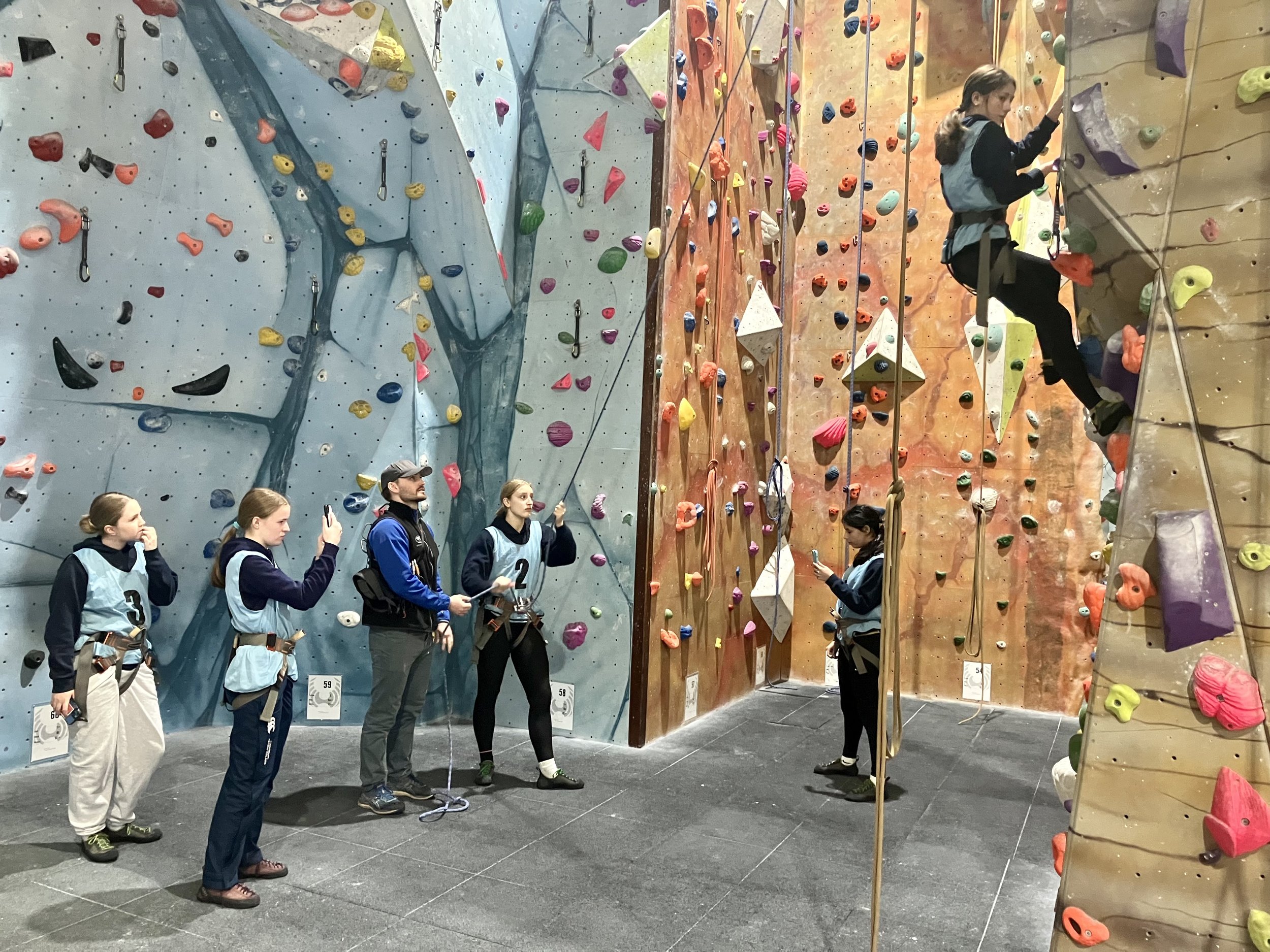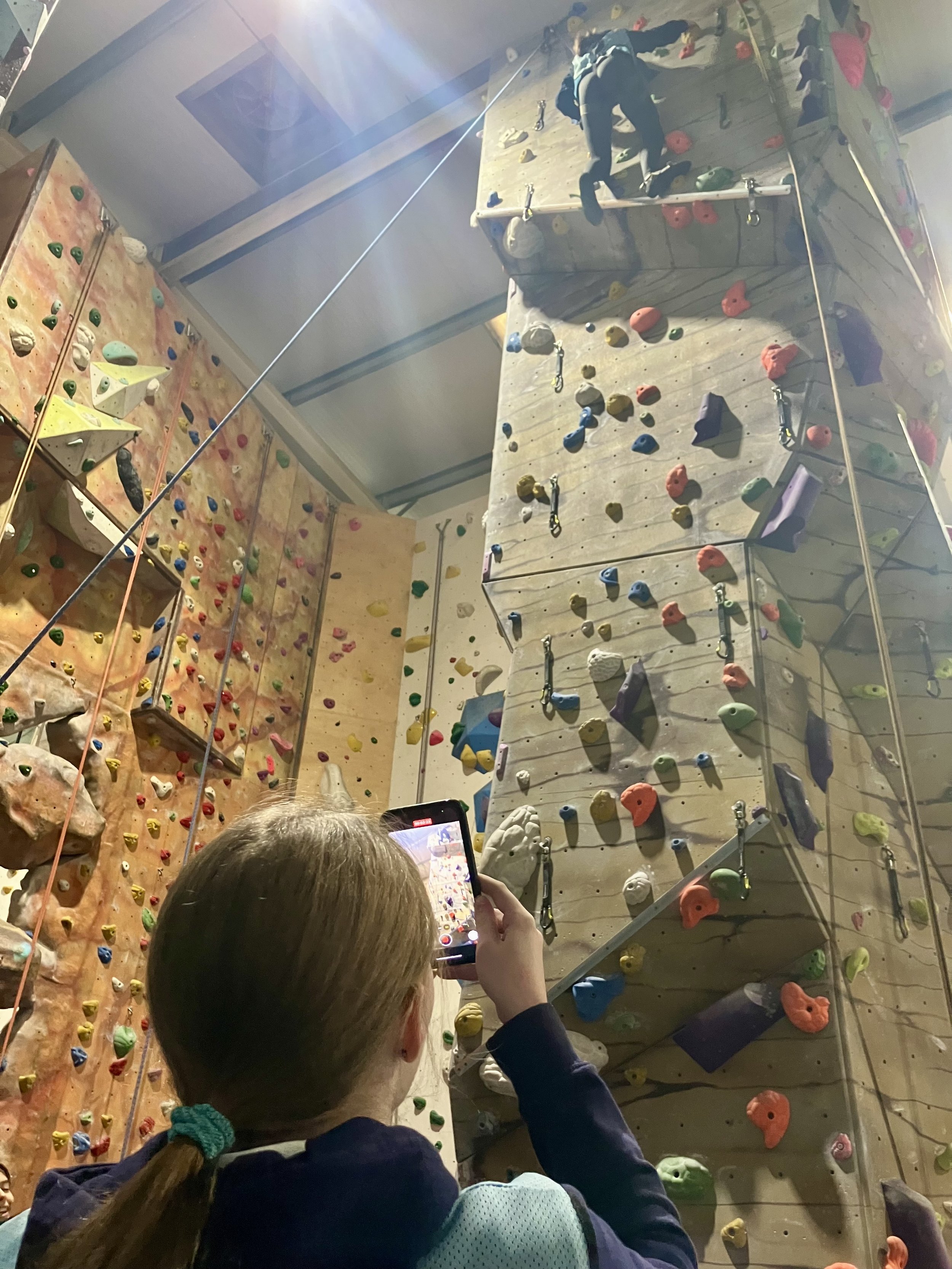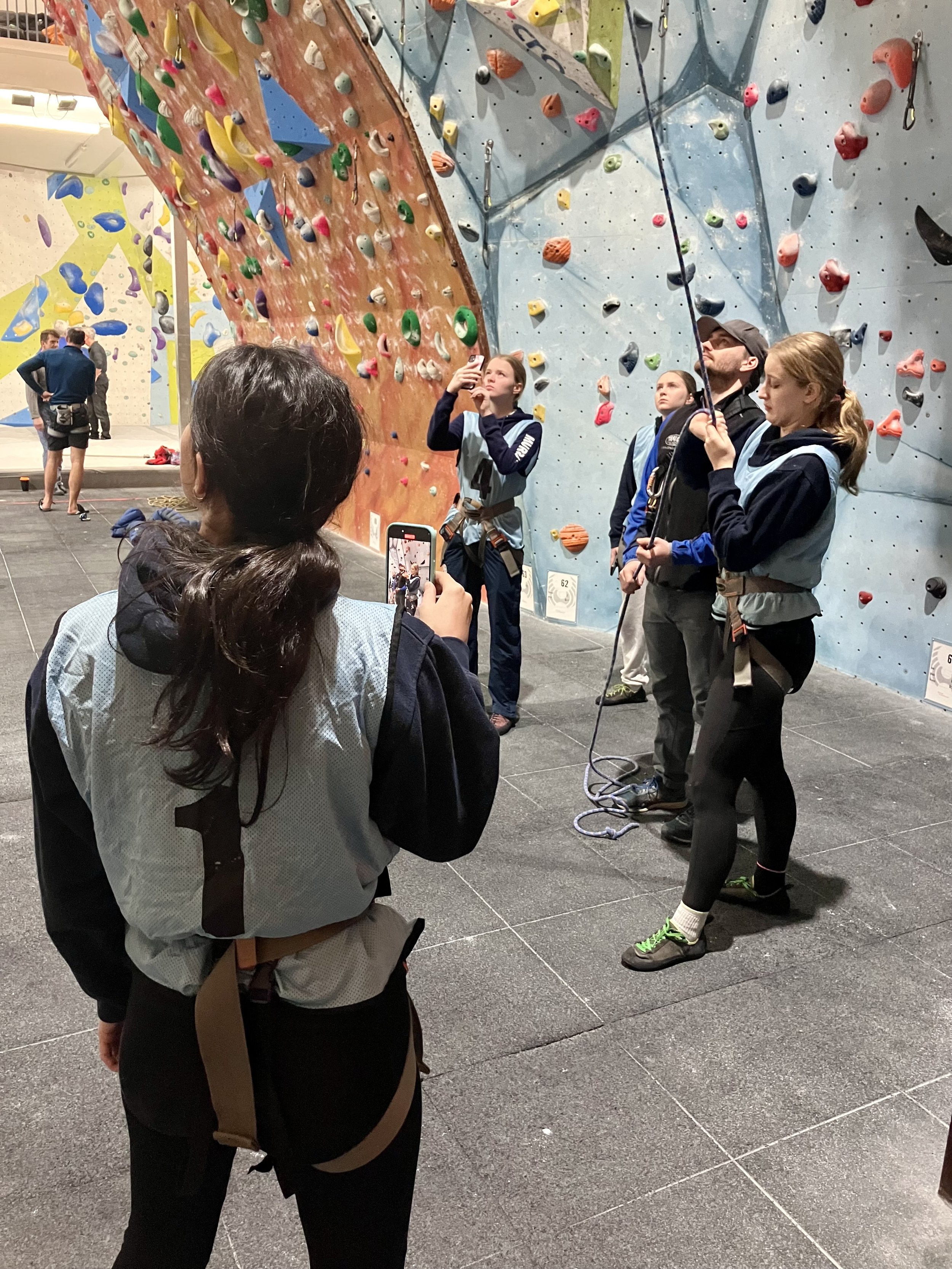









GCSE PE Rock Climbing Courses for the AQA Exam Board
GCSE PE Climbing for AQA can be taught as day courses n the south east, or residentials in the Peak District - two days needed
AQA GCSE PE Climbing
With AQA, students can either be assessed indoors or outdoors.
The good news is that AQA have the most straightforward syllabus for GCSE PE climbing, and good grades can be achieved on a 2 day course. By climbing indoors especially, a large number of climbs can be completed, which gives students a great opportunity to learn and develop the skills required, gain a high score, and also gather a large amount of supporting video evidence.
The syllabus states that a minimum of 2 different climbs are used – we find that students with us climb between 12 and 20 climbs on our indoor courses. Outdoors, we would expect this to be 8 – 12.
We guide the students on what and when to film – the easiest way is on their phones ( to later upload to a school system )
1 Rope Work – we teach students how to tie in with a figure of eight knot which we video in isolation as soon as it’s achieved. Students will then continue to tie in for the remainder of the course so will be filmed again throughout, usually in a full context situation.
Students will be taught to belay each other whilst climbing, and then lower. Effective communication / calls are used as part of this process – again, initially filmed in isolation, this will be filmed again in full context. With AQA only one type of belay device is required to be used, so students soon become familiar with this and are able to improve their performance and consequently get a higher quality video. An instructor will tail a rope at all times to ensure safety.
2 Three Points of Contact – the best way to get good at climbing is to climb! The amount of climbs available, especially indoors, means that students can start on easy graded routes and progress quickly. Climbing with 3 points of contact is easily coached and students will soon grasp the concept. Starting on slab climbs, we then move onto vertical climbs before climbing overhanging routes.
3 Traversing / Climbing – we always spend some time traversing on our courses (usually on the morning on Day 1) as it’s a great way for students to experiment with / understand that weight transfer and body shape can improve their climbing. Arm Extension, foot placement, stepping through and hand and feet matching can easily be demonstrated and practiced whilst traversing. Indoor walls will have a dedicated traverse or boulder wall specifically for this and this always leads to marked improvement. We then encourage the students to use these new tools / skills on increasingly steep climbs. We always video traversing; firstly in order to build evidence, but also so students can review their footage and fine tune their technique.
4 Climbing at limit – Climbing indoors there are a large number of climbs, and each is clearly graded. This helps to keep the students motivated as it is easy for them to track their improvement. Starting with a Grade 4 slab, we progress through the grades with some high performing students climbing as hard as 6b. On Day 2 especially, students decide which climbs they would like to climb and film. Some will be completed on sight, but as the grades get harder a few attempts / rehearsal may be needed. Reviewing of personal video or learning from another students experience / video here is a valuable tool to climbing to as high a grade as possible. We film everything as we don’t know what any students limit is until we reach it!
5 Climbing overhanging / steep ground – we build towards climbing overhangs. Indoors, overhanging climbs begin at 4+ so are very achievable. Upper body strength and foot placement as high as possible are crucial as terrain gets steeper and we find that students appreciate this through practice and repetition.
AQA specifically requires tying in with an appropriate knot and belay and lower with a single type of belay device, which is all easily taught and usually grasped quickly by the students. Every other part of the syllabus is learnt and refined by physically climbing, so with AQA students get to climb more - the technical side is minimal.
Different climbs highlight different skills, so our staff guide the students through a number of appropriate climbs in order to firstly develop the skills required, and then problem solve and use decision making to use the correct skill in any given situation. When done alongside tying in and with effective communication, students are constantly climbing in a full context situation. Reps are therefore key so we will fit in as many climbs as possible. By filming all of this, we are able to help the students to build an impressive amount of supporting video evidence.
With a two day course, providing students are reasonably physically able and have a good attitude to learning, we have a history of helping students achieve very good scores, usually high teens and into the twenties. Teachers also tell us that moderators are very impressed with the amount of video footage that back up these scores.
